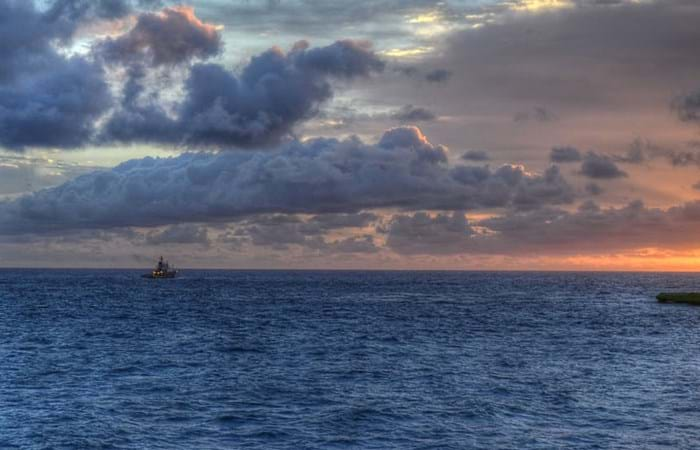OGX - OSX is a Brazilian oil and gas company owning and operating several floating facilities in Brazil. MODEC secured the FPSO purchase contract and subsequently awarded Boskalis the Mooring Installation & Hook-up contract. The FPSO had to be installed in the Tubarão Martelo Field, located in the Campos Basin, Brazil, in 105 meters water depth.
The FPSO OSX-3 is permanently moored by means of a 360 degrees weathervaning external turret mooring system. The mooring system consists of a total of twelve mooring legs in a 3-by-4 arrangement, where the centerline of each group is 120 degrees apart. Each mooring chain is held by a driven pile and consists of a connector shackle and 120 mm stud-less chain up to the hang off point on the turret.
Mooring installation and hook-up
Boskalis was responsible for the planning and administration of the project, the development of detailed installation procedures and the execution of the mooring installation (phase 1) followed by the FPSO Hook-up (phase 2). Upon arrival and importation of equipment and mooring components in Rio de Janeiro it was loaded on board the installation vessel (Construction Support Vessel (CSV) Boa Deep C) directly from the transportation vessel. After receiving the Installation License from the Company the CSV sailed to site and after an ROV pre-survey the installation of the anchor piles started. The mooring chains were connected to the mooring piles on deck of the CSV and installed at designated location within specified tolerances. Upon installation of the piles the mooring chains were pre-tensioned with the CSV to a tension of 200 ton and laid in a pre-determined pattern on the seabed; wet stored until hook-up operation commenced. This phase was completed end of August 2013.


